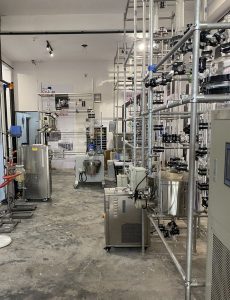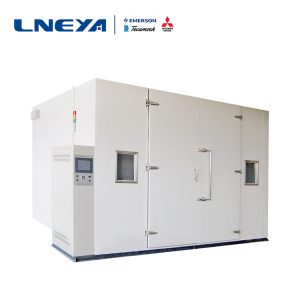The Method That Small Water Cooled Chiller Needs To Follow When Charging Refrigerant
In our life, we believe that everyone is very familiar with refrigeration. In the central air conditioning and industrial production process cooling industry, small water cooled chiller is more common. This unit is composed of a compressor in the fuselage, a horizontal shell and tube condenser, an evaporator, a thermal expansion valve, and some related parts. Under the cooperation of these auxiliary parts, the overall small water cooled chiller is compact in structure, convenient in operation and control, and is popular among the public in the market.
For refrigeration systems that do not have a high pressure reservoir and a low pressure vapor-liquid separator, the control of refrigerant charge is particularly important. Because the refrigeration system is a condenser and also acts as a high-pressure reservoir, the refrigerant is stored in the condenser, and the condenser is cooled. The heat dissipation area is reduced and the condensing pressure is increased, resulting in a decrease in cooling capacity.
For the control of the refrigerant charge of such small water cooled chillers, the following methods are followed during the filling process:
First, touch the temperature of the condenser casing.
The upper outlet of the condenser outlet is heated above the outlet, and the outlet below the outlet is cool. (There is a description of the high temperature exhaust of the compressor in the inside. The cooling indicates that the small water-cooled chiller is a liquid space.)
Second, look at the inspiratory pressure.
Corresponding to the temperature of the refrigerant water in the evaporator. (That is, corresponding to the evaporation temperature.)
Third, look at the compressor return pipe temperature.
The high-temperature unit return pipe should be cooled and dew, but it can be dew condensation to the compressor return valve; the low-temperature unit return pipe should be frosted, but the frost can be connected to the compressor return valve. If condensation or frost builds up on the compressor casing, liquid refrigerant will enter the crankcase, causing the compressor to run back and cause liquid problem.
Recomendaciones relacionadas
-
Working state of temperature control circulating device for purification of small-scale distillation
1512Distillation reflux concentration and purification temperature-control circulating device is widely used in many fields. It is very important to select appropriate equipment, which can greatly improve product quality and reduce production costs t...
Ver detalles -
What is the connection between temperature and chemical reaction?
1388The chemical reaction can produce more stable products, and then as the temperature is released, the energy before the component reaction is released. On the other hand, the components of the reaction may produce different products, depending on t...
Ver detalles -
¿Qué es el sistema de control de la temperatura de la pinza térmica utilizado para las pruebas de semiconductores?
1815La integración de sistemas de control de temperatura y cartuchos térmicos se utiliza principalmente en el proceso de pruebas de la industria de semiconductores, sirviendo a los siguientes propósitos clave: Pruebas de aceptación de obleas (WAT): Tras la finalización del proceso de...
Ver detalles -
Hot and cold rapid temperature change test chamber common fault
1635In the high-temperature test of the hot and cold rapid temperature change test chamber, once the temperature change does not reach the test temperature value, in this case, the electrical system can be inspected and the faults can be eliminated on...
Ver detalles
 LNEYA Enfriadoras industriales Fabricante Proveedor
LNEYA Enfriadoras industriales Fabricante Proveedor













